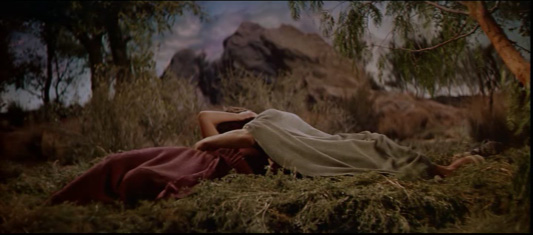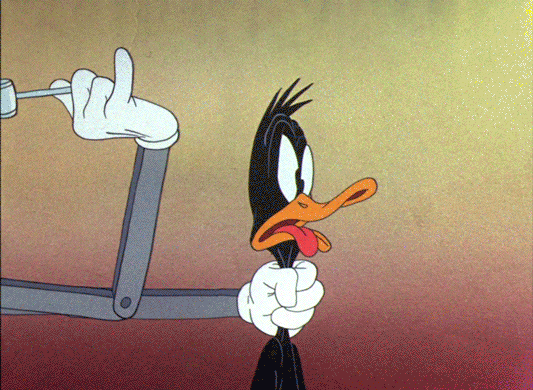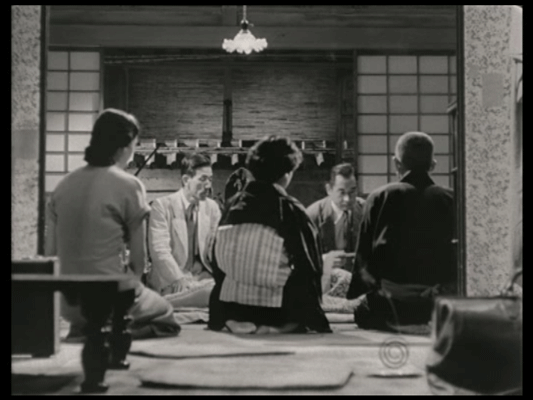Let us just stay with costume colors for a moment. Stanley Kubrick is widely known as a director who particularly pays attention to colors (especially in BARRY LYNDON, 1975, and THE SHINING, 1979). Although he inherited Kirk Douglas' production of SPARTACUS (1960) from Anthony Mann and the sword and sandal epic turned out to be the only film he didn't have power over the final cut, he nonetheless left his mark on the staging and filming of it.
As we have seen in DR. NO (1962), efficient costume design can be very simple. Since SPARTACUS is about a slave uprising, I will not focus on the more exquisite Roman togae on display in the screenshot below. As Technicolor schemes were usually built around the appearance of the leading lady I will have a closer look at the costume colors of Spartacus' love interest Varinia (Jean Simmons).
In other words: I am focussing on the slave girl that almost blends in with the scenery since her working dress looks like it was made out of the same cloth as the curtains.
All the slaves are clad in earthly brown colors. Some of the gladiators are also seen in olive green hooded cloaks. Spartacus himself is one of them and for most of the story he is wearing his simple green gladiator cloak.
Green is a very important color in most of Kubrick's films. This does not mean that there is one single specified meaning attached to it as Kubrick often developed a self-contained semiotic language within a given filmic universe. After all, Kubrick was keen on ambiguity so that each member of the audience could interpret what they see in their own way. Some may argue that this does not extend to SPARTACUS, a movie with very clear-cut heroes and villains and - very unusual for Kubrick - a sentimental love story subplot. Yet while the story may be clear-cut, the visuals are not.
Looking at the female lead there is a rather straightforward progression from blending in to standing out reflected in the colors of her costume.
Spartacus meets Varinia when she is given to him for pleasure and he refuses to behave like an animal in a cage. As long as she is Batiatus' (Peter Ustinov) house slave, she is merely part of her surroundings wearing a very desaturated salmon working garment.
Their next opportunity to touch each other comes when Varinia is feeding the gladiators. Again Spartacus wears his cloak.
Then we see Varinia serve Batiatus and his illustrious guests. In these scenes that show Varinia as a witness of the Romans' conversations she still blends in while clad in a more elegant dress.
Here, Batiatus' subordinate is wearing green. Finally, deep red is introduced as the recognizable color of Roman soldiers.
Varinia's role (of necessity, not choice) of passive spectator is reinforced during the gladiatorial combat that ends with Spartacus losing but Draba (Woody Strode) being killed.
Then after the fight, their costume colors are reversed - Kubrick liked mirror images throughout his career - and Varinia is seen in (Spartacus'?) green cloak at night.
Both shots (above and below) visually emphasize the iron bars that prevent Varinia and Spartacus from being free and together. Spartacus is seen in his working/training garment of the same color as Varinia's.
During the successful uprising, Varinia is forced to flee with Crassus. Now she is not trapped within the gates of Batiatus' farm any more. As the servant of an ambitious Roman politician she wears a pale red (salmon colored) cape/stole.
Finally, the lovers meet in the open at dusk. Now Spartacus blends in with the green environment. He seems to be at home here. Varinia's pale red dress made way for a darker but still desaturated purple dress.
The next time we see her, she is bathing in a whole pool of green water and not too unexpectedly she confesses to Spartacus that she is pregnant.
Later, in a tent, there is hardly any distinction between their colors as everything is illuminated by torches.
After the final battle however, we have seen so many bodies and so many captives. Only after the famous "I am Spartacus" scene, Crassus sees a deep red cape that does not belong to a fallen Roman soldier.
Now Varinia - possibly to avoid showing blood as well - stands out in this strong red garment that matches Crassus' cape.
In the end, Batiatus and Gracchus manage to free Varinia and get her out of the city. She now wears a turquoise (light green-blue) cloak that may serve as a disguise but also connects her to Spartacus' cause. The green will live within her and their son.
As I have already written, there is certainly more to these colors. Not least of all their immediate affective impact on the viewer and (as is expected with a filmmaker of Kubrick's meticulousness) historical accuracy. But since SPARTACUS is Kubrick's least interesting feature, I will not dig deeper any time soon.
 |
| Kubrick liked charging primary and secondary colors with meaning. |
In other words: I am focussing on the slave girl that almost blends in with the scenery since her working dress looks like it was made out of the same cloth as the curtains.
 |
| Crassus is obviously attracted to Varinia. |
 |
| Green dominates Spartacus' environment. Does he represent vitality and nature? |
Green is a very important color in most of Kubrick's films. This does not mean that there is one single specified meaning attached to it as Kubrick often developed a self-contained semiotic language within a given filmic universe. After all, Kubrick was keen on ambiguity so that each member of the audience could interpret what they see in their own way. Some may argue that this does not extend to SPARTACUS, a movie with very clear-cut heroes and villains and - very unusual for Kubrick - a sentimental love story subplot. Yet while the story may be clear-cut, the visuals are not.
Looking at the female lead there is a rather straightforward progression from blending in to standing out reflected in the colors of her costume.
Spartacus meets Varinia when she is given to him for pleasure and he refuses to behave like an animal in a cage. As long as she is Batiatus' (Peter Ustinov) house slave, she is merely part of her surroundings wearing a very desaturated salmon working garment.
 |
| Within a rather muted, earthly look there is a visible green - brown contrast. |
Then we see Varinia serve Batiatus and his illustrious guests. In these scenes that show Varinia as a witness of the Romans' conversations she still blends in while clad in a more elegant dress.
Here, Batiatus' subordinate is wearing green. Finally, deep red is introduced as the recognizable color of Roman soldiers.
Varinia's role (of necessity, not choice) of passive spectator is reinforced during the gladiatorial combat that ends with Spartacus losing but Draba (Woody Strode) being killed.
Then after the fight, their costume colors are reversed - Kubrick liked mirror images throughout his career - and Varinia is seen in (Spartacus'?) green cloak at night.
Both shots (above and below) visually emphasize the iron bars that prevent Varinia and Spartacus from being free and together. Spartacus is seen in his working/training garment of the same color as Varinia's.
During the successful uprising, Varinia is forced to flee with Crassus. Now she is not trapped within the gates of Batiatus' farm any more. As the servant of an ambitious Roman politician she wears a pale red (salmon colored) cape/stole.
Finally, the lovers meet in the open at dusk. Now Spartacus blends in with the green environment. He seems to be at home here. Varinia's pale red dress made way for a darker but still desaturated purple dress.
The next time we see her, she is bathing in a whole pool of green water and not too unexpectedly she confesses to Spartacus that she is pregnant.
Later, in a tent, there is hardly any distinction between their colors as everything is illuminated by torches.
After the final battle however, we have seen so many bodies and so many captives. Only after the famous "I am Spartacus" scene, Crassus sees a deep red cape that does not belong to a fallen Roman soldier.
 |
| This red cape does not belong to a Roman soldier... |
 |
| ...but to Varinia and her newborn baby boy. |
 |
| Now, Varinia is in complementary contrast to the Roman soldier at the gates of the city. |
As I have already written, there is certainly more to these colors. Not least of all their immediate affective impact on the viewer and (as is expected with a filmmaker of Kubrick's meticulousness) historical accuracy. But since SPARTACUS is Kubrick's least interesting feature, I will not dig deeper any time soon.












































































































































































































































































